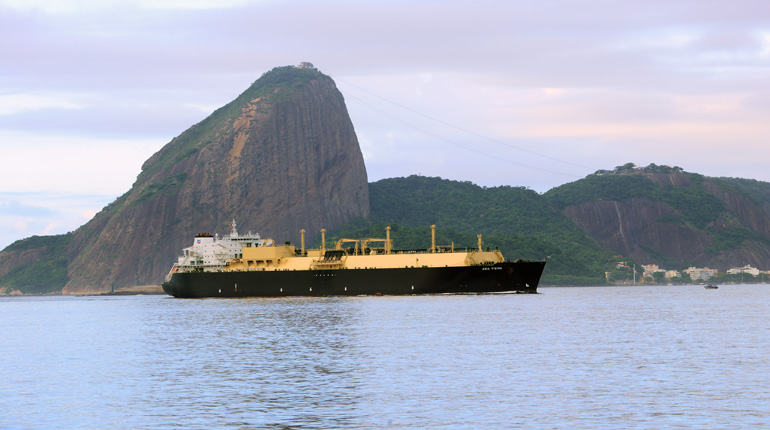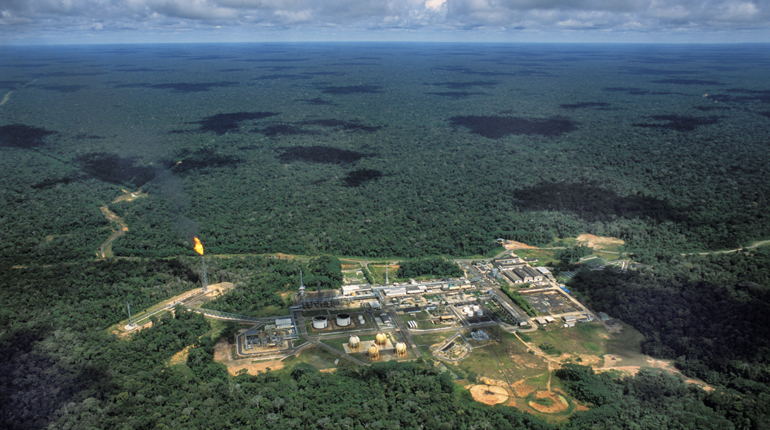 Sabine Pass LNG sent its first commissioning cargo to Brazil in February. (Petrobras)
Sabine Pass LNG sent its first commissioning cargo to Brazil in February. (Petrobras)
India is poised to receive its first shipment of LNG from the United States, but experts have said the relatively high price of US exports compared with spot cargoes means the trade route is unlikely to prove popular for the time being.
The shipment is due to arrive at India’s Dabhol LNG terminal later this month, having set sail from Sabine Pass on the US Gulf Coast last weekend. Cheniere Energy, the operator of Sabine Pass, has a 20-year, 3.5 mtpa purchase agreement with India’s Gail, signed in 2011. However, as a commissioning cargo the LNG does not form part of Gail’s contract and was bought on the spot market.
K. Ravichandran, senior vice president for credit rating agency ICRA, said the low oil price would make future, contracted volumes uncompetitive compared with spot cargoes.
"There can be a price disadvantage of at least $2-3/MMBtu to account for liquefaction, transportation, regasification, pipeline tariffs and total taxation. The landed cost will be higher than spot LNG prices available today. This works well when oil prices are very high, in the range of $100-120 per barrel. Until then, LNG from the US could be slightly uncompetitive to other spot or short-term LNG linked to crude oil prices," Ravichandran said.
This month’s shipment cost $5/MMBtu before taxes, according to press reports. This is slightly higher than spot LNG prices in Asia in the first two weeks of April, which averaged $4.1-4.2/MMBtu. Gail did not respond to requests for confirmation. The company is expected to begin contracted offtake in late 2016.
Ravichandran said the average price was expected to be favourable over the 20-year life of the contract as oil prices should recover in the medium term. Gail is building a balanced portfolio of contracts linked to both gas-based prices and long-term oil-linked indices.
The advantage of US LNG
US LNG also has the slight qualitative advantage of being well suited for industries such as petrochemicals, LPG and urea production for fertilisers. "Most of the LNG available in the market tends to be leaner [having lower net calorific values with high methane content] and better suited for power generation. LNG from the US and the Middle East is richer and well suited for the petrochemical and fertiliser sectors," he said.
The US has only just started exporting LNG sourced from shale, with its first shipment sent to Brazil in February. The shipment came within days of Australia’s Gorgon project sending out its first shipment of LNG amid widespread concern in the market of a worsening supply glut.
Gail has another contract to import 2.3 mtpa from Dominion’s Cove Point LNG plant in Maryland.
This is a good time for a new source of gas to enter the Indian market as demand is set to rise with a greater push for piped gas and the expansion of the city gas sector. A central government policy to establish ‘smart cities’ includes intensive use of pipeline gas, with 35 cities having approved construction of city gas distribution pipeline networks. A further 98 cities are waiting for approval under the scheme.
However, an anonymous source pointed out that gas currently makes up just 7% of India’s total energy mix as it remains uncompetitive with coal and renewables. Furthermore, the source said India’s LNG import capacity of 24-25 mtpa remained underutilised in 2015, at just 17-18 mtpa.
"India is not a very big market for the US, especially at $5/MMBtu, which is not a sustainable price for US producers," the source said. Low prices have dented the hopes of many North American LNG developers. Despite the numerous liquefaction plants mooted, only a handful are expected to come online.
The source also said that India may not be a priority for the US, as South America and Europe are much larger and closer. Although Asian markets such as Japan and South Korea are attractive to US producers, they will face competition from Australian LNG in the region, he added.
The US has been exporting conventionally sourced LNG from ConocoPhillips’s Kenai LNG plant in Alaska since the 1960s. The LNG was delivered to two utilities in Japan.








Talk to us
Natural Gas Daily welcomes your comments. Email us at [email protected].